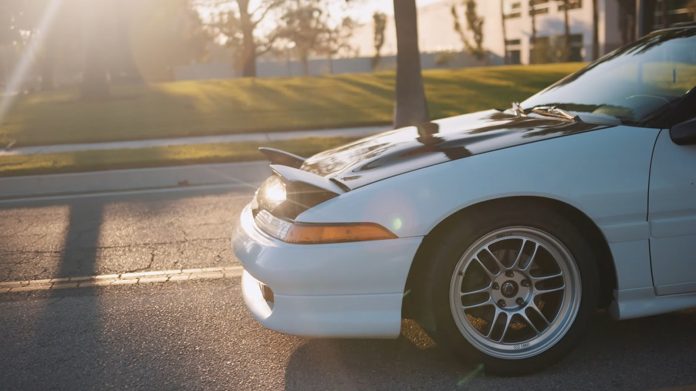For anyone who came of age in the ’90s, the first-gen Mitsubishi Eclipse looked like it came straight off a Gran Turismo loading screen with its low stance, pop-up lights, and unmistakable bulging hood. Most of us assumed it was hiding a turbo or some exotic intake plumbing -– because of course it had to be. But the truth is, that bump wasn’t there for boost at all. Nope. It was there to give space for the engine.
The story starts with Diamond-Star Motors (DSM), the late-’80s joint venture between Mitsubishi and Chrysler that birthed triplets: the Mitsubishi Eclipse, Eagle Talon, and Plymouth Laser. All three shared platforms, powertrains, and design quirks -– like that mysterious hood swell. Underneath sat the 4G63 engine, which was one of the most beloved four-cylinders of its era. According to long-time DSM owners on forums like DSMtalk and Mighty Car Mods, the bulge was partly a tooling compromise for that engine. It allowed a single hood pressing to fit both turbo and non-turbo variants, with added clearance for the cam gear cover. This was the easiest solution — better than modifying the whole 4G63 itself, right?
In other words, it was a design born of practicality, not performance. But in typical ’90s fashion, that design decision gave the Eclipse an aggressive “don’t mess with me” look that helped define its street-cred identity.
Influences of the Mitsubishi Eclipse’s bump
Despite the legend it created, the hood bump didn’t do much for performance. It wasn’t channeling any cold-air intake or cooling the turbo, unlike the hood scoops in turbocharged cars. It was mostly dead weight shaped like ambition, but it did make production simpler. Mitsubishi engineers could stamp the same hood across the lineup, saving costs while maintaining enough headroom — literally — for the different engine setups.
Still, the bump’s visual effect couldn’t be ignored. To the untrained eye, it looked purposeful, almost like it screamed “forced induction” — even if a humble non-turbo 1.8L 5MT or 2.0L 16V turbo engine sat under the hood. It also made room for an engine enthusiasts love, with many seeing the bump as a design quirk that made even base models look meaner than they were. The car — bump and all — was iconic, and when it was featured in “Fast and the Furious” as Paul Walker’s ride, that status was escalated. Fanboys wanted the Eclipse (even replicating the build) after seeing it decked-up with neon green paint, decals, and underglow lights.
By the third-generation Eclipse (2000 onward), Mitsubishi ditched the bulge entirely. Its looks were tamed and the under-hood layouts were cleaner, leading to the sleek ’90s jellybean appearance taking over. The hood bump became a relic, left as a byproduct of cross-company engineering and happy accidents.
So no, the bump wasn’t for the turbo. It was for making things fit. But like most good design quirks, it stuck in our memory because it looked fast — and furious — even when standing still.






